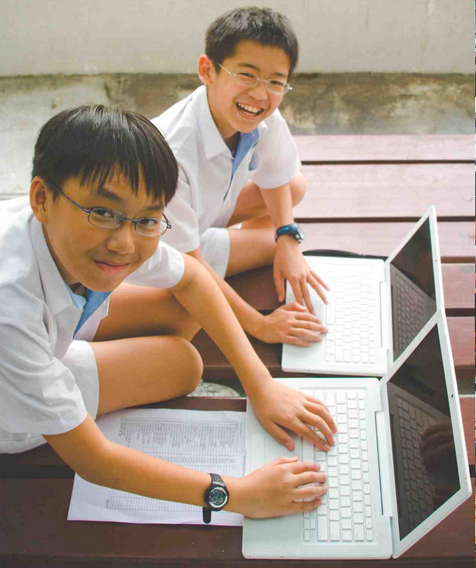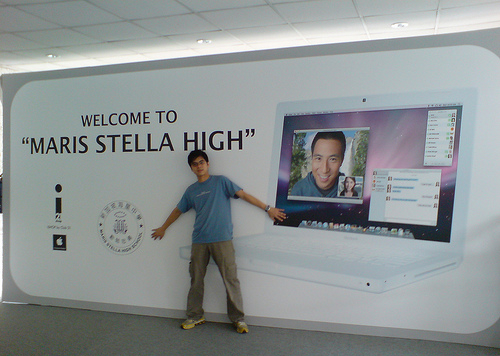
I thought of writing this post during a free period as a teacher is absent. And I realized I haven’t used the macbook in school for weeks. Even a teacher had admitted they would not let us use our Macbooks to plot graphs as we will wonder off to other applications.
It’s kinda sad. They just started the “Future Maris Stella@ Singapore” program the year I came into this school. It was the first school in the Asia-Pacific region that used MacBooks as a medium to teach their own curriculum. There was so much fanfare, and Apple even listed “no viruses” as one of their bulletins on the “Why buy a Mac brochure”.

Whenever teachers asked students to take their $2000+ computers out for educational purposes, their first instinct is to fire up Safari and surf the web. It slowly evolved from browsing Facebook into playing Call of Duty 4. The teachers simply have no control over it. The much-hyped Apple remote desktop meant to control us failed, and we managed to find a way to overcome it within weeks. Since then, teachers gradually stopped using Macbooks as an educational tool.
This is what actually happened in some classes:
So what exactly went wrong? Isn’t laptops in school the future, as practically every science fiction movie had shown us?
The “Standard Operating Procedure” and “Acceptable use policy” were erected, but there ain’t enough manpower to enforce it. Students, especially boys, tend to break rules. With the power of computers in our hands, we can easily evade pretty much everything without any much hassle by using the quick command-tap or command-Q. It’s near impossible for the older teachers to screw us. Well, unless the CoD LAN classroom is raided wholesale.
To let us charge our Macbooks efficiently (without using sockets at the sides of the classroom), the school added the Eubiq power strips. One worrying problem is that the adaptor is substandard and a small kick will break it into two. It got so irritating that no one bother re-assembling the adapter and just charge his Mac from the wall socket directly.
After a letter from a company about someone torrenting in the school, the school then started harnessing 802.11X security (AirPort Extreme’s latest wireless technology is called 802.11n). It’s basically a secure user/password lock to the school’s wireless network, and allows the teacher to spot-check who visited what websites.

However, it turned out that the older Macs do adapt to this technology very well and many of us with newer Macbooks were left with no internet access, and this issue screwed up many lessons when the teachers actually attempted to use the Macbook to teach. It got so irritating that as much as one quarter of the cohort did not bother to fix it, and the teachers’ ain’t using it anyway.
Exams are usually done on paper. It had been that way since ancient china. Stuff we learn (maybe with the exception of languages) are designed to be worked out on paper. One quintessential example would be algebra. They are easy to write, but it’s hard to type out in most word-processing software.
Macbooks are very expensive. With the way Apple overcharges their products, careless 13-year-old students who accidentally damage their computers are in for a shock. A Magsafe™ charger cost a staggering S$150 (USD$108) to replace. And if you break a component that is pretty crucial, then it would be doomsday for you.
Mini-VGA plugs are also surprising weak. These $30-a-pop small connectors are the one and only way to use a projector on a Mac. They damage so easily that teachers’ PowerPoint presentations are often tainted with a yellow background (due to broken wires inside). Thus, without the $30 doodle, we cannot even project our Macs on the big screen in front without proper wires.
I do like the idea of technology and computers, but after 2 years of this, I am starting to doubt that. Maybe tablets (with Stylus!) can be used as a piece of paper, but there must be a way to monitor them and lock them to certain apps only. Or else, teenagers, being teenagers, will start drawing on that “paper”. Or they will just draw phalluses. You know, we are a boys’ school…